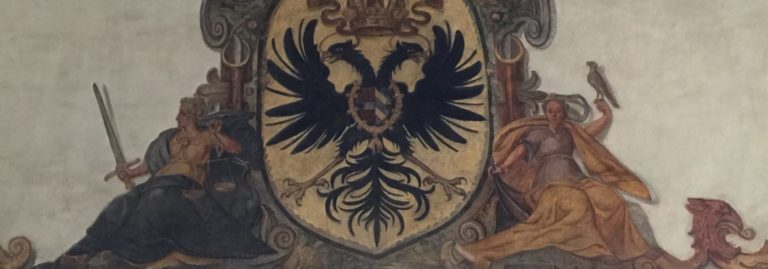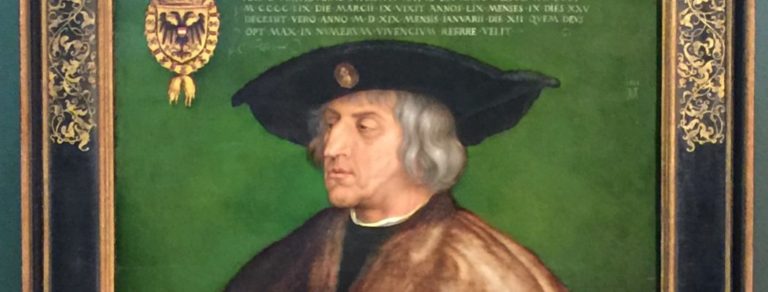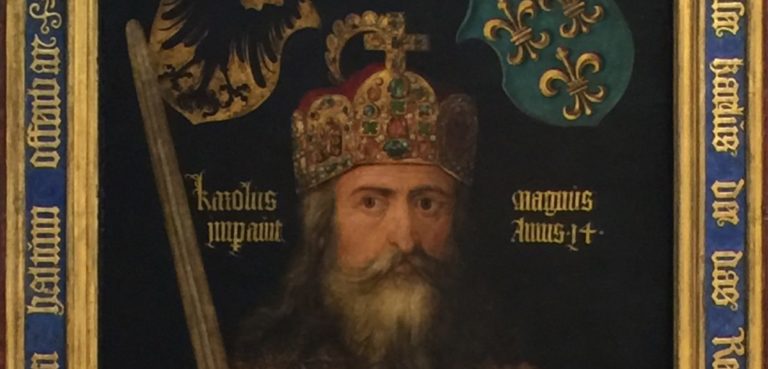Life in 6th Century Arabia was tough. Tribal clans of nomads wandered the endless desert without much visible means of support. Like the Eskimos of the Arctic, you have to wonder why they chose to live in such an inhospitable environment. Living on the razor’s edge of survival did not breed trust or community. The most reliable occupation was to stage a “ghazu”, a raid on a neighbor or a passing caravan. It was time for a new direction.

These very concerns and the unhealthy concentration of wealth he saw developing in the Kabah pilgrimage town of Mecca, caused Muhammad to seek guidance. In 610 CE, he began to recite verses from his visions that formed the initial “suras” of the Koran. By 612 CE, he began to share his learning with others and to form his own community of believers, the “ummah”.
In 622 CE, Muhammad led his followers to Medinah. After 8 years of armed struggle and a dramatic non-violent confrontation in Mecca, Muhammad had expanded his Islamic ummah through most of central Arabia. He passed away in 632 CE. Two current religious scholars weigh in with Islam: A Short History (Modern Library Chronicles) by Karen Armstrong, and No god but God (Updated Edition): The Origins, Evolution, and Future of Islam
by Reza Aslan.
The new sense of unity provided by Islam did not come with an economic solution to the desert. In fact, it proscribed staging any ghazus on your Muslim neighbors. Mohammad’s successors, being practical men, hit on the obvious solution: stage big ghazus on the non-Islamic neighbors! The rest of the world suddenly became aware of the new kids on the block.
Their timing was fortuitous. Persia and Byzantium were worn out from decades of battle. Nobody else was particularly well organized. So, by 650 CE, the Muslims had swept through Jerusalem, Palestine, Syria, Iraq, Egypt, Iran, Afghanistan, and west to Tunisia. By 718 CE, they had covered the African Mediterranean coast and taken the Iberian Peninsula from the Romanized Visigoths. Moorish Spain and A Vanished World: Muslims, Christians, and Jews in Medieval Spain

The Moorish advance into Western Europe was finally halted at Poitiers, in Southern France by Charlemagne’s grandfather, Charles Martel, in 732 CE. (See the Cruisereader article, “From the Imperial Primordial Ooze”.) The Muslims were content to develop one of the most advanced and sophisticated cities in Europe at Cordova.
Christians started to make significant progress pushing the Moors out of Northern Spain in 1085 CE. It finally took the staunch Catholic duo of Ferdinand and Isabella to expel Islam from Spain in 1492.
Back east, things had been somewhat more eventful. Most of the warfare had been confined to Muslim in-fighting throughout the Middle East. However, in 1071 CE, the Seljuk Turks defeated the Byzantine army and took control of central Turkey.
You’ll recall in the article on “The Christian Continent”, that the Great Schism had taken place in 1054 CE. The Christian Church had split acrimoniously between Roman Catholic and Eastern Orthodox. However, with the Muslims knocking at the door, the Eastern Patriarch appealed to his estranged Roman compatriot for assistance. For political as well as ecumenical reasons, Pope Urban II inspired the western European monarchs to rally to the cause. The First Crusade was launched in 1095 CE, and Jerusalem was liberated in 1099 CE.
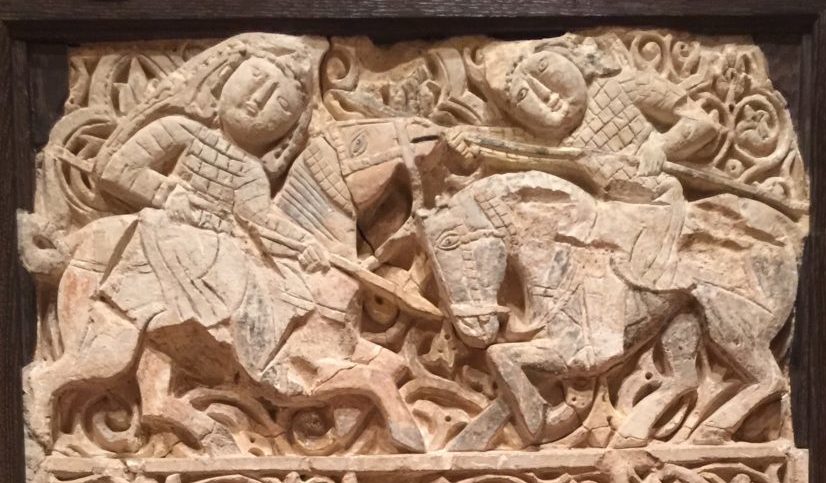
By 1187 CE, the charismatic Islamic general, Saladin, had snatched Jerusalem back from the disorganized Christians. Crusades would continue, though not successfully, for many years. It is a romanticized period in history with many colorful characters, lots of righteousness, a fair amount of treachery and a ton of bloodshed. The Crusades: The Authoritative History of the War for the Holy Land, and The Crusades Through Arab Eyes
.
By 1204 CE, with the infamous Fourth Crusade, Constantinople had been brutally sacked by its own Christian allies and the weakened Eastern Empire began its death spiral. The Fourth Crusade and the Sack of Constantinople. Then came the Muslims. See SALADIN: Hero of Islam
, and the contemporary islamic history The Rare and Excellent History of Saladin (Crusade Texts in Translation)
By 1220 CE, the Seljuks were forced to focus their attention eastward on the arrival of the Mongol invasions. A young tribal leader fleeing the Horde settled south of Constantinople and pledged allegiance to the Seljuks. He started to nibble at the weakened Byzantine cities and expand his influence. His son was Osman I, who continued the expansion and controlled most of Western Turkey by his death in 1326 CE.
It is Osman who is considered the founder of the Ottoman Empire. As a strong leader he attracted followers pouring into Turkey to avoid the Mongols. As a warrior against the Christian Byzantines, he was seen as the herald for Ghazi religious fighters seeking to expand Islam. He launched an empire that lasted over 600 years, through WWI. Osman’s Dream: The History of the Ottoman Empire
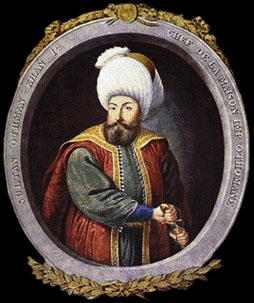
After Osman’s death, the Ottomans began a long end game to conquer Constantinople. Instead of taking the capital head-on, they took Gallipoli at the head of the Dardanelles in 1354 CE and gained their entry into Southeastern Europe.
The infighting in the Byzantine Empire played right into their hands as they slowly plucked Bulgaria, Serbia, Greece, and Thrace (European Turkey) out of the Byzantine orbit, thus encircling the big city. In their panic at the tightening noose, the Byzantines continued their murderous civil wars. When they appealed to Rome and the Western crowns for support, they found they had no friends left.
Constantinople fell in 1453 CE. It became the Ottoman capital. Historians suggest that the brain-drain from Constantinople to Western Europe, caused by the 1204 CE sacking and the 1453 CE fall, fed Italy with the classical, humanist intellectual fodder to fuel the Renaissance. For the Ottomans, the fall of the Byzantines meant they had no enemy at their back while they continued to march into Eastern Europe. 1453: The Holy War for Constantinople and the Clash of Islam and the West
The Ottomans sallied confidently into Hungary, Serbia, Croatia and even Poland. Battles were won, tribute was paid, vassalages were proclaimed, and the fighting continued. The Ottomans advanced, but never really seemed to conquer.

Suleiman the Magnificent made it all the way to Vienna in 1529 CE, but was turned back. See Suleiman the Magnificent, or the more recent Four Princes: Henry VIII, Francis I, Charles V, Suleiman the Magnificent and the Obsessions that Forged Modern Europe
, one of whom is Suleiman. Turks advanced on Vienna again, one hundred and fifty-four years later, in 1683 CE, and were again checked, this time by the Hapsburgs of Austria, (See painting above, by Geffels, 1688). The Enemy at the Gate: Habsburgs, Ottomans, and the Battle for Europe
Expansion of Hapsburg power and diminishing Ottoman influence shifted the momentum and the Turks slowly retreated from Eastern Europe, treaty by treaty, until WWI brought an end to their European presence. However, 600 years of dominance over resentful Eastern European populations fueled an intense hatred of Muslims that continues to this day in these countries. Yugoslavia: Death of a Nation
As you cruise the Danube from Vienna eastward, the topics of historic interest will shift dramatically from the Catholic/Protestant mega-monarchs of Western European fame to the Orthodox/Islamic legacy of the Ottoman invasions. It is as if you have entered a different continent.





